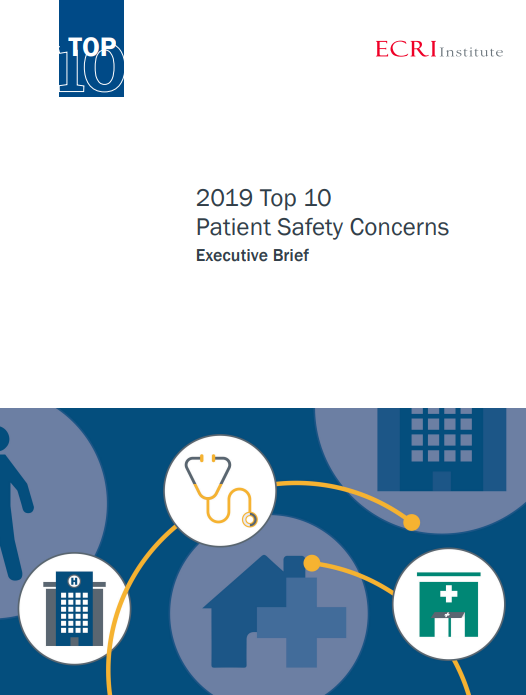Published on:
Misdiagnoses and test results mismanagement at the top of patient safety concerns in 2019
 As medicine evolves so do the risks for medical malpractice. Here are the top main risks according to the 2019 Top 10 Patient Safety Concerns recently published by the ECRI Institute:
As medicine evolves so do the risks for medical malpractice. Here are the top main risks according to the 2019 Top 10 Patient Safety Concerns recently published by the ECRI Institute:
- Improper use of the Electronic Health Record (EHR) can be medical malpractice that can cause severe harm and sometimes death. Diagnoses that are not proprely communicated or followed up are the number one concern when it comes to patient safety in 2019. Too often, the 3 main components of the EHR, The diagnosis, the treatment plan and the follow up plan are inaccurate or missing. As a result, the risk of diagnostic error increases.
- The second biggest cause of concern for patient safety is the over prescription of antibiotics to patients that increases their antibiotic resistance and as a result limits their future treatment options. The over prescription of antibiotics affect particularly seniors who believe antibiotics can help them to feel better in almost any type of situation and doctors who are handing them out like candies.
- The third most important cause of arm to patients in 2019 is burn out of the medical staff. The increased pressure not only on doctors and nurses but also on all other health care providers and organizational leaders has led to a significant increase in burnout, depression and suicide. As a result, the safety and quality of care to patients decreases and the risk for medical malpractice increases.
- Mobile Health Technology is the fourth cause of concern for patient safety. Patients at home being supervised by doctors through various phone applications has lead to an increased amount of medical issues. Despite being a promising tool, the actual lack of regulation doesn’t ensure that providers are receiving data accurately and that patients are using apps proprely. The risk of inaccurate data can result in serious harm to patients.
- Discomfort with patients suffering with behavioral health needs can lead health providers to be scared and react defensively in a manner that can have consequences on both patients and staff. It is the fifth most important patient safety concern and a concern for medical staff as well. Medical providers need to be better trained on how to communicate with such patients in a way that they can reduce their fears and keep their skills sharp.
- Failure to detect changes in patients condition can seriously harm patients and sometimes be a cause of death. The highest risk of occurrence is when the patient is being moved from one facility to another.
- Medical providers unfamiliar with equipment such as infusion pumps as well as robotic equipment in surgery setting or lacking competence with procedures and processes are the cause of significant harm to patients. For example, mothers are still dying at an alarming rate because a hemorrhage after child birth wasn’t proprely managed. To prevent patient harm, healthcare providers have to constantly develop and maintain their skills. Failure to do so can result in medical malpractice.
- Failure to timely diagnose sepsis is also among the top 10 concerns of the ECRI Institute. Early detection of the infection is crucial to prevent death and medical staff has to be proprely trained to detect it. Sharing patient information is also key for early diagnosis.
- Infection resulting from Peripheral intravenous (PIV) catheters is often under-reported, under-recognized, and often ignored. PIV catheters are inserted in every patient upon admission to a hospital even though they may not need it.
- Patient safety in “mega health system” suffers because processes to protect them are not effective. As they are getting bigger and bigger, organizations have to internally structure themselves to address patient safety needs.
Download the Executive Summary
 New York Personal Injury Attorneys Blog
New York Personal Injury Attorneys Blog


